How to feed your cat
Like many things in life, feeding your cat can be as difficult or as simple as you want to make it. At the simple end, a measured amount of dry complete food is scooped into a bowl and at the more complex end a carefully formulated home-made diet is produced supplemented with vitamins and minerals. Both these ‘extremes’ of diet have their critics and advocates, and both if selected incorrectly can lead to dietary and medical problems. So just how do you feed your cat safely?
Cats are not small dogs
All cat owners know that cats most certainly are not small dogs, however one of the most common feeding errors is to feed cats dog food. Unlike dogs, cats are obligate carnivores, they need a diet high in protein, with moderate amounts of fat and low in carbohydrate. Cats also require some specific nutritional components, including the amino acids Taurine and Arginine, in their diets. Dogs are able to use carbohydrates better than cats and do not need the same dietary vitamins and amino acids. Cats fed, or more often stealing, dog food may be deficient in protein, taurine, niacin, vitamin A, and fatty acids.
Commercial cat foods
A commercial cat food is undoubtedly the easiest way of feeding a cat for those of us with busy lives. Cat foods come in various forms including dry, soft-moist, and canned. Most foods contain the essential nutrients the cat needs, although it is worth checking on the packaging that the food is complete and balance. In terms of quality, with cat food you generally get what you pay for. The cheaper foods (both wet ad dry) tend to be carbohydrate rich and contain poorer quality meat, good quality dry foods are typically more economical to feed. With all good quality foods the main difference between the food types is the amount of water in the product. Wet cat foods are sometimes more palatable and useful for those with picky appetites including older cats. There can be issues with water intake with dry foods and certainly a constant supply of water in a form the cat likes (dripping taps or water fountains in some cases) is essential with ALL foods. Dry food has the advantage of being more ‘chewable’ and may help maintain good dentition, although many cats just swallow their dry foods with little chewing at all.
It is important to feed your cat a food appropriate to its life-stage (kitten, adult, senior) as diets are formulated to support the needs of growth, maintenance and old age. Much of what the pet food companies have learnt about nutrition of specific medical problems has been transferred to these diets so they do make a real difference, not just in kittens but also to older cats. Various special and prescription diets are also produced for those cats with dietary and other medical problems that can be helped by reducing or increasing certain dietary components. Prescription diets can be a great benefit to cats with specific diseases and often reduce or take away the need for medication. Remember prescription diets will be balanced differently to normal cat food so only feed them with veterinary direction and do not feed them to other clinically well cats as this can be dangerous.
Home made diets
It is possible to formulate a safe home made diet for your cat and there are a couple of reliable websites to help you do this. It is not a simple process however. Home-made diets are meat rich, usually with an offal component and always with nutritional supplements including taurine. There can be some serious safety issues associated with feeding raw meat especially if this is not classified as ‘fit for human consumption’. Remember all meat diets without supplementation result in medical problems and are especially dangerous in growing kittens.
What not to feed
There are some foods that are poisonous to cats (and dogs) and these included onion, garlic, kelp, grapes or raisins, and chocolate. These foods should always be avoided and veterinary advice sought if your cat has access to these. Most other foods can be eaten safely by cats in moderation, but are best avoided in any quantity. These included salty foods (ham, tuna in brine), raw fish (which causes thiamine deficiency) and large amounts of unsupplemented meat. Most cat owners do not plan to feed their cat a diet of just tuna in brine but it is amazing how quickly a cat can drift into eating just one thing and care must be taken to ensure that this does not happen. As with all of us however, the odd treat is unlikely to do any harm.
Finally
Unfortunately one of the biggest and increasing medical issues in cats, as in people, is obesity. Ensuring that your cat does not eat too much, providing regular exercise and having regular weight checks, is every bit as important as what you choose to feed.
About the author:
Liz Mullineaux has worked as a small animal vet for over 25 years, many of those as a director of a large veterinary hospital. She now works for Vets Now emergency service in Edinburgh and in a variety of other clinical and academic roles. She is also a huge fan and client of Catseye Cattery.


